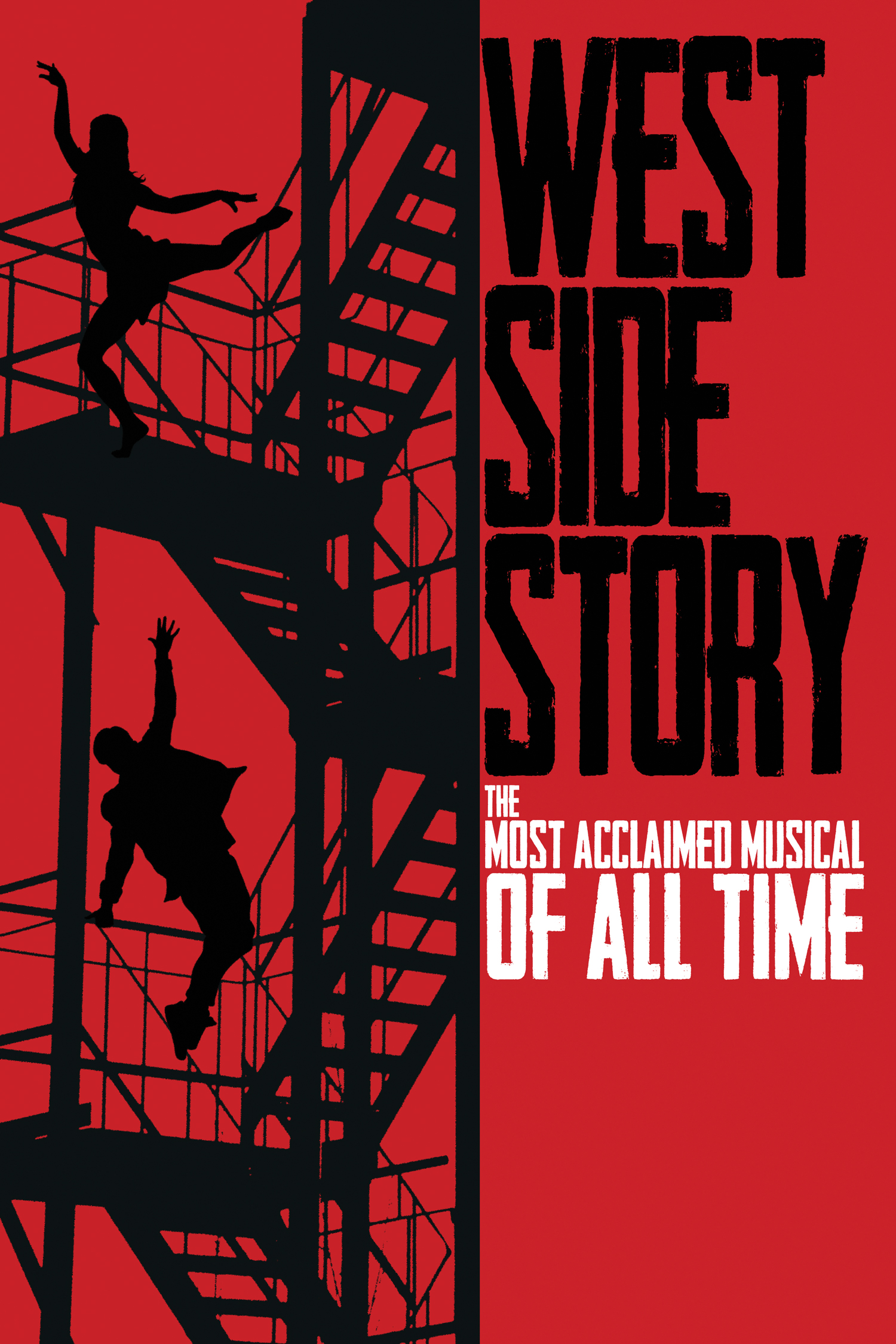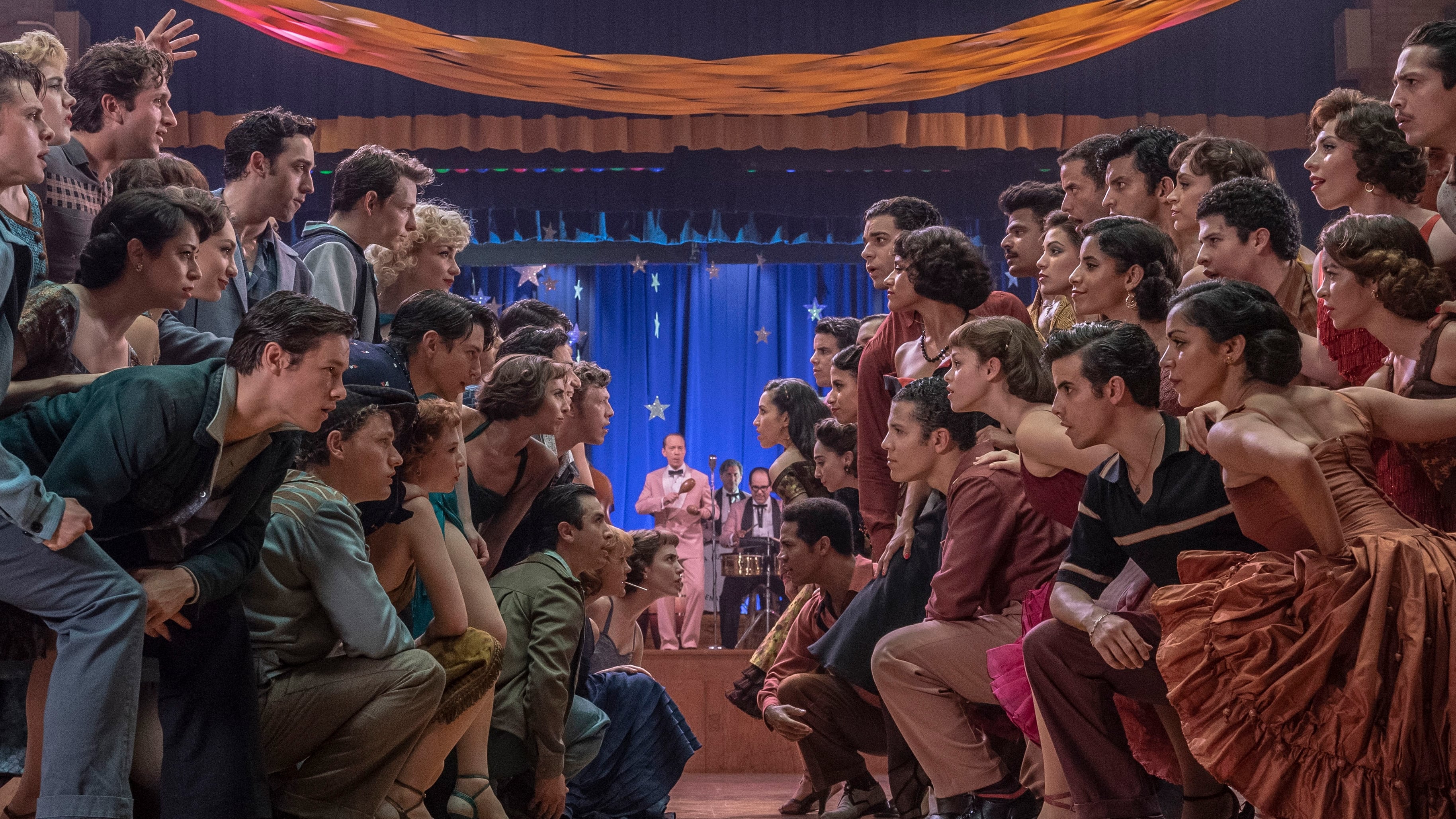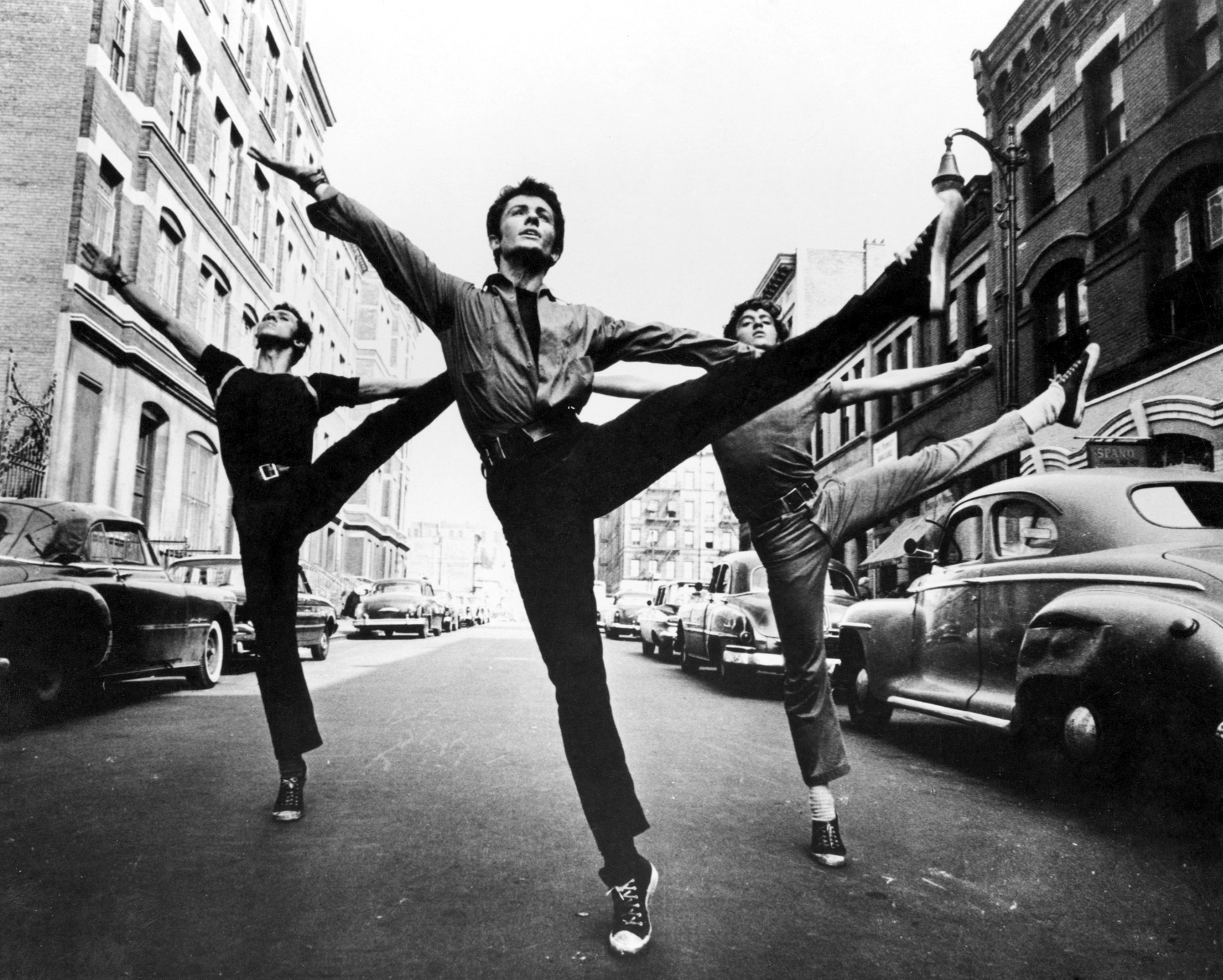West Side Story: A Timeless Tale That Still Resonates Today
**You’ve probably heard about West Side Story, but have you ever really dived into what makes it such a timeless masterpiece? This isn’t just a musical—it’s a cultural phenomenon that has touched hearts and minds across generations. From its explosive choreography to its heart-wrenching storyline, West Side Story continues to captivate audiences worldwide. Whether you’re a die-hard fan or just curious about why it’s so iconic, this article will take you on a deep dive into everything West Side Story.**
Let’s get real for a sec—West Side Story isn’t just some random musical from the '50s. It’s a groundbreaking work that tackles issues like love, conflict, and identity in ways that were unheard of at the time. Think about it: back then, people weren’t exactly open to discussing racial tensions or forbidden romances. But West Side Story didn’t shy away from those tough topics. Instead, it faced them head-on with raw emotion and unforgettable music.
And guess what? Even though it first hit the stage decades ago, its themes are still relevant today. We’ll explore why this classic remains so powerful and how it continues to inspire both creators and audiences alike. So buckle up because we’re about to break down everything you need to know about West Side Story—and maybe even change the way you see it forever.
Read also:Discover The Ultimate Fun With Masafun Your Gateway To Adventure
What Exactly is West Side Story?
First things first: let’s clear up what exactly West Side Story is all about. At its core, it’s a modern retelling of Shakespeare’s Romeo and Juliet set in 1950s New York City. The story follows two rival gangs—the Jets (a group of white Americans) and the Sharks (a Puerto Rican gang)—and the forbidden love between Tony, a former Jet, and Maria, the sister of the Shark leader Bernardo.
But here’s the kicker: it’s not just another love story. West Side Story dives deep into themes of prejudice, belonging, and the consequences of hate. It’s intense, emotional, and packed with some of the most iconic songs in musical theater history. Seriously, who doesn’t know “America” or “Tonight”? These tunes have become part of pop culture, and for good reason.
Why Was West Side Story Created?
The origins of West Side Story are as fascinating as the story itself. It all started when composer Leonard Bernstein and choreographer Jerome Robbins decided they wanted to create something different—a musical that would tackle serious social issues while still being entertaining. They teamed up with lyricist Stephen Sondheim and playwright Arthur Laurents to bring their vision to life.
What’s wild is that the original idea was actually based on Jewish-Christian tensions. But after some brainstorming, they shifted the focus to reflect the growing tensions between Puerto Rican immigrants and native New Yorkers during the '50s. And voilà—West Side Story was born!
The Cultural Impact of West Side Story
When West Side Story premiered on Broadway in 1957, it was unlike anything audiences had seen before. Sure, there were musicals with catchy songs and flashy dance numbers, but none of them dared to tackle the kind of heavy themes West Side Story did. It opened people’s eyes to the realities of gang violence, racism, and the struggles of immigrant communities.
And let’s talk about the music for a sec. Bernstein’s score blends classical and jazz influences with Latin rhythms, creating a sound that feels both familiar and groundbreaking. Songs like “Somewhere” and “Cool” became instant classics, and they’re still performed by artists across genres today. It’s no wonder West Side Story won a Tony Award for Best Musical—it truly changed the game.
Read also:Temporary Replacement 3 The Ultimate Guide To Understanding Its Role And Benefits
How West Side Story Shaped Musical Theater
West Side Story didn’t just entertain—it revolutionized the world of musical theater. Before its debut, most musicals were lighthearted and focused on romance or comedy. But West Side Story proved that musicals could also be serious and thought-provoking. It paved the way for future works like Les Misérables and Hamilton, showing that theater could tackle complex social issues without losing its charm.
And let’s not forget the choreography. Jerome Robbins’ work in West Side Story is legendary. His dynamic, athletic movements brought the characters’ emotions to life in ways words alone couldn’t. From the tense battles between the Jets and Sharks to the vibrant celebration in “America,” every dance number added depth and meaning to the story. No wonder he won a Tony for his efforts!
West Side Story in Film
The success of West Side Story on Broadway naturally led to a film adaptation. Released in 1961, the movie was directed by Robert Wise and Jerome Robbins and featured an all-star cast, including Natalie Wood as Maria and Richard Beymer as Tony. The film was a smash hit, earning 10 Academy Awards, including Best Picture. It introduced West Side Story to a whole new audience and solidified its place in pop culture history.
Fast forward to 2021, and we got a brand-new adaptation directed by none other than Steven Spielberg. This version stays true to the original story while also updating it for modern audiences. It features a diverse cast, including Rachel Zegler as Maria and Ansel Elgort as Tony, and incorporates more authentic Latinx representation. Both films have their own unique strengths, but they both capture the essence of what makes West Side Story so special.
Comparing the Two Adaptations
Now, here’s where it gets interesting. While the 1961 film is a classic in its own right, Spielberg’s 2021 version brings a fresh perspective to the story. For one thing, it addresses some of the criticisms of the original film, such as the lack of authentic Latinx voices. Spielberg worked closely with Lin-Manuel Miranda to incorporate more Spanish dialogue and showcase the richness of Puerto Rican culture.
But that’s not to say the original film isn’t worth watching. Its stunning cinematography and groundbreaking choreography still hold up today. Plus, there’s something magical about seeing Natalie Wood and Rita Moreno bring these iconic characters to life. So whether you prefer the classic or the modern take, both adaptations offer something special to fans of West Side Story.
West Side Story’s Enduring Legacy
Decades after its debut, West Side Story continues to resonate with audiences around the world. Its universal themes of love, conflict, and identity transcend time and place, making it relevant to each new generation. Whether you’re watching it on stage, screen, or even TikTok, there’s something about this story that sticks with you long after the final note fades away.
And let’s not forget its influence on popular culture. From countless covers of its songs to parodies and tributes in movies and TV shows, West Side Story has left an indelible mark on the entertainment industry. It’s inspired countless creators to push boundaries and tell stories that matter. In short, it’s more than just a musical—it’s a cultural touchstone.
Why West Side Story Still Matters Today
In a world that often feels divided, West Side Story reminds us of the power of empathy and understanding. Its message of bridging divides and finding common ground is as important now as it was in the '50s. Whether you’re dealing with issues of race, class, or nationality, this story offers a powerful reminder that we’re all human at the end of the day.
Plus, let’s face it—the music is just plain awesome. Who doesn’t feel a little thrill hearing the opening notes of “Jet Song” or the soaring harmonies of “Somewhere”? These songs have become part of our collective consciousness, and for good reason. They capture the highs and lows of human emotion in ways that words alone can’t.
Behind the Scenes of West Side Story
Of course, no discussion of West Side Story would be complete without diving into the incredible talent behind the scenes. Leonard Bernstein’s score is a masterpiece of orchestration, blending classical and jazz elements with Latin rhythms to create a sound that’s both familiar and groundbreaking. His ability to convey emotion through music is unmatched, and it’s one of the reasons West Side Story has stood the test of time.
Then there’s Jerome Robbins, whose choreography brought the story to life in ways that words alone couldn’t. His dynamic, athletic movements added depth and meaning to every scene, from the explosive gang fights to the joyful celebration in “America.” And let’s not forget Stephen Sondheim’s lyrics, which perfectly capture the characters’ inner struggles and desires. Together, these creative forces created something truly unforgettable.
The Challenges of Bringing West Side Story to Life
Creating a work as ambitious as West Side Story wasn’t easy. The team faced numerous challenges, from casting the right actors to perfecting the complex choreography. But perhaps the biggest challenge was tackling such heavy themes in a way that felt authentic and respectful. They had to walk a fine line between entertainment and social commentary, and they did it beautifully.
And let’s not forget the technical challenges of bringing this story to life. Whether it’s staging the massive dance numbers or coordinating the intricate musical cues, every aspect of West Side Story required precision and dedication. It’s a testament to the talent and vision of everyone involved that it all came together so seamlessly.
West Side Story: A Musical Masterpiece
At the end of the day, West Side Story is more than just a musical—it’s a masterpiece of storytelling, music, and choreography. It tackles tough issues with grace and sensitivity while delivering a love story that’s both romantic and tragic. Whether you’re a lifelong fan or new to the world of musical theater, there’s something about West Side Story that speaks to everyone.
So the next time you hear “Somewhere” or see a dance number inspired by Jerome Robbins, take a moment to appreciate the incredible legacy of West Side Story. It’s a reminder that art has the power to change hearts and minds, and that’s something worth celebrating.
Final Thoughts on West Side Story
In conclusion, West Side Story is a cultural phenomenon that continues to captivate audiences worldwide. Its timeless themes, unforgettable music, and groundbreaking choreography have made it a staple of musical theater history. Whether you’re watching it on stage, screen, or even TikTok, there’s something about this story that resonates with everyone.
So if you haven’t already, go check out West Side Story for yourself. Whether you prefer the classic 1961 film or Spielberg’s modern adaptation, you’re in for a treat. And while you’re at it, why not share your thoughts in the comments below? Let’s keep the conversation going and celebrate the magic of West Side Story together!
Table of Contents
What Exactly is West Side Story?
Why Was West Side Story Created?
The Cultural Impact of West Side Story
West Side Story’s Enduring Legacy
Why West Side Story Still Matters Today
Behind the Scenes of West Side Story
The Challenges of Bringing West Side Story to Life
West Side Story: A Musical Masterpiece


